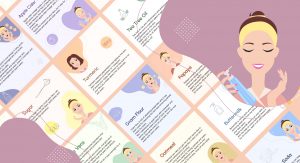This bundle includes 20 high quality images with unique and relevant texts. Download these ready made content for your social promotions.
Bipolar disorder is a mental health condition characterized by extreme shifts in mood: episodes of mania, or an extremely elevated mood and episodes of depression, or a low mood. Other terms for bipolar disorder are manic depression and bipolar disease. Bipolar disorder isn’t a rare condition at all. In fact, statistics suggest that 2.8 percent of U.S. adults – or about 5 million people – have been diagnosed with bipolar disorder. There are 3 main types of bipolar disorder: bipolar I, bipolar II, and cyclothymia. You’ll definitely want to see a doctor who can diagnose you and explain more about what kind of bipolar disorder you have when giving your diagnosis.

Bipolar disorder is a mental health condition characterized by extreme mood swings. Key symptoms include: episodes of mania, or an extremely elevated mood and episodes of depression, or a low mood.

Bipolar I: Bipolar I is marked by the appearance of at least one manic episode. People experience hypomanic episodes, which are less severe than manic episodes, or major depressive episodes before and after the manic episode. People of both sexes are equally affected by this type of bipolar disorder.

Bipolar II: People with bipolar II experience one major depressive episode lasting at least 2 weeks. They also have at least 1 hypomanic episode lasting about 4 days. Women may be more prone to this kind of bipolar disorder.

Cyclothymia: People with cyclothymia have both episodes of hypomania and depression. These episodes involve symptoms that are shorter and less severe than the mania and depression that the other types cause. Most patients experience no mood symptoms for 1 or 2 months at a time.

Three main features of bipolar disorder are mania, hypomania, and depression. Different types of bipolar disorder involve different combinations of these symptoms.

Mania: An episode of mania is often defined by an emotional high. One might feel excited, impulsive, euphoric, and full of energy and racing thoughts. Some people may experience hallucinations and other symptoms of psychosis.

With hypomania, one might feel very productive and energized, but the changes in the mood are not that noticeable. Episodes of hypomania don’t involve psychosis and typically, won’t last as long as episodes of mania or require inpatient care.

Major depressive episodes: Depending on your type of bipolar disorder, one might experience a few symptoms of depression or full five symptoms of major depressive episodes with a lasting low mood, marked by deep sadness, hopelessness, or feelings of emptiness.

Women with bipolar disorder are more likely to be diagnosed later in life, in their 20s or 30s. They may first notice symptoms during pregnancy or after childbirth. Women with bipolar disorder tend to experience: milder episodes of mania and more depressive episodes.

Men with bipolar disorder are most likely to get diagnosed earlier in life and experience fewer but more severe episodes, especially manic episodes, show more aggression during episodes of mania.

Teens with bipolar disorder experience similar mood changes, but they tend to be more irritable during their episodes. Teens with this condition may be unable to focus, feel incredibly happy or act silly, in contrary feel very down and sad, worthless, empty, and guilty, have suicidal thoughts.

Children with bipolar disorder experience extreme mood shifts. They can appear very cheerful, happy and show signs of excitable behavior, or seem very tearful, low, and irritable. Bipolar disorder causes distinct and noticeable changes in mood that are more extreme than a child’s typical mood swing.

Although there is no cure for bipolar disorder, there are numerous effective treatments available. These treatment choices can help you in learning to manage mood episodes, which can ease your symptoms, and improve your overall quality of life.

Medications: Recommended medications may include: mood stabilizers, antipsychotics, antidepressant-antipsychotics, anti-anxiety medication used for short-term treatment.

Cognitive behavioral therapy: CBT is a type of talk therapy that helps identify and address problematic thoughts and change unwanted patterns of behavior. CBT also assists in learning and practicing more helpful coping mechanisms.

Natural remedies: Though It is always better to check with your doctor before trying these remedies, natural herbs and supplements like Rhodiola rosea, omega-3, S-adenosylmethionine may help stabilize your mood and reduce symptoms of bipolar disorder when combined with medication and therapy.

Doctors are unsure of what causes bipolar disorder. It’s widely believed that a combination of family genes, brain structure, and the environment contributes to this disorder.

Genetics: If your parents or siblings are diagnosed with bipolar disorder, you’re more likely to develop the condition. But you should keep in mind that most people who have a family history of bipolar disorder don’t ever develop it.

Brain structure: One’s brain structure may affect the risk of developing bipolar disorder. Irregularities in brain chemistry, or the structure or functions of the brain, may increase this risk.

Environmental factors: It’s not just the inner workings of one’s brain that can affect your chances of developing bipolar disorder. Outside factors like extreme stress, traumatic experiences and physical illness can also play a part.
Ads Design Maker for Social Media Needs
Everyday tool for SMM needs.



